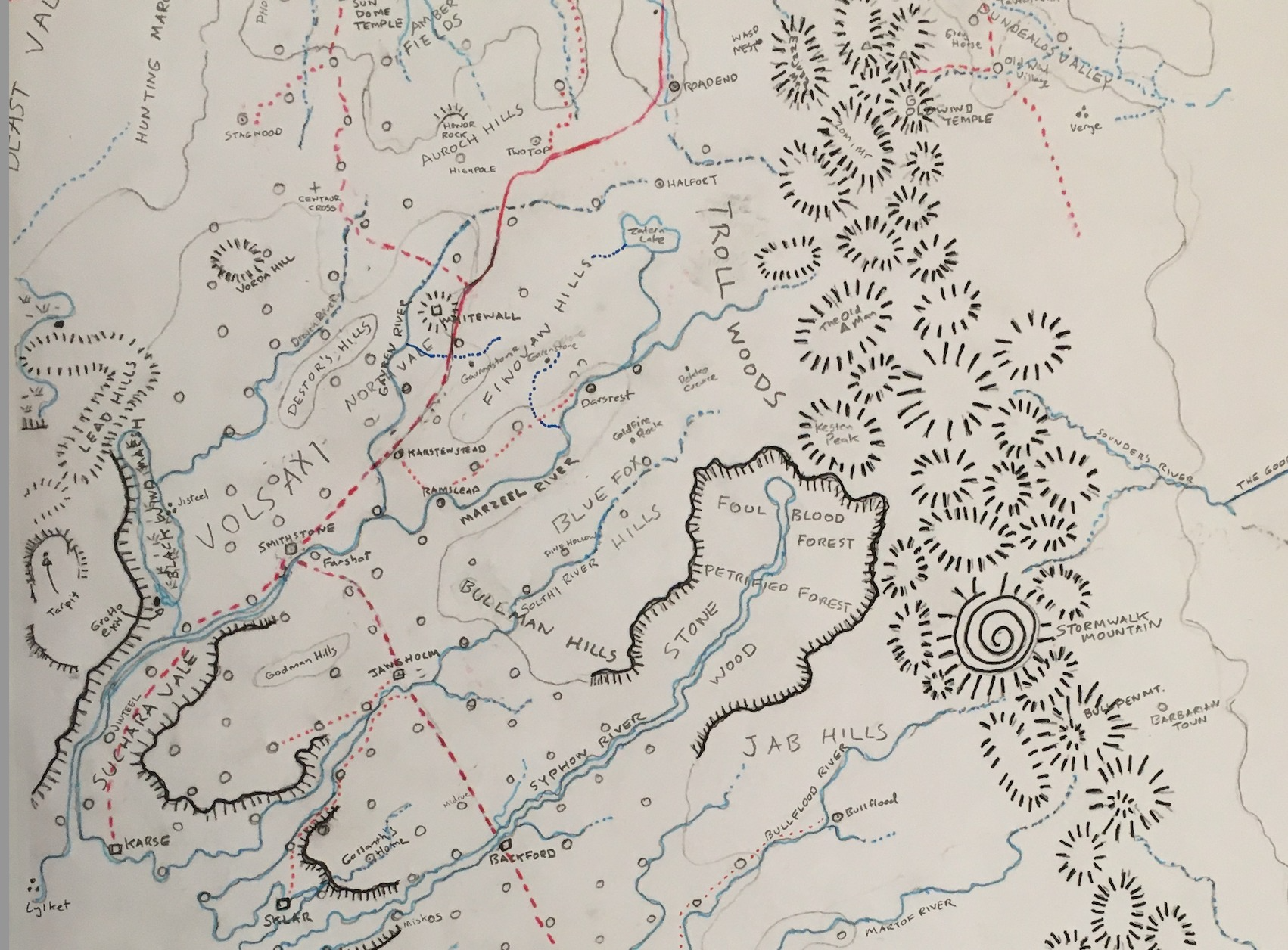There are about 175000 humans in the lands between the Crossline and the Syphon River. These are mostly Orlanthi, often called the Heortlings or the Hendriki.
This area has been part of the Sixth of Heortland since 1318, but experienced much turmoil for its first century. Until the Principality of Sartar facilitated trade across Dragon Pass, northern Heortland was a comparatively poor but overcrowded part of the Holy Country, and tens of thousands people left the area to settle Dragon Pass during that period, and migration from Heortland to Sartar continues to the present day.
From 1569 to 1617, the largest tribal group here were the Volsaxi of Whitewall, although in truth they were never all that much larger than the Colymar tribe of Dragon Pass. From 1617-1625, most of the area was united into a (new) Hendriki kingdom by King Broyan of Whitewall, however, with his death his confederation has collapsed.
In 1625, this area looks to the restored Principality of Sartar for protection and aid, and that relationship is destined to grow deeper. During the Hero Wars, this area is often known as “South Sartar”.
![]()
![]()
If we think about Northern Heortland from 1300-1500, it was still in the “Kethaelan Dark Ages” that followed in the wake of the Dragonkill War. Other than Karse, there were no significant cities (Whitewall was better thought of as a fortified temple than a city). The settlers in Dragon Pass were even more removed, and the whole area from Karse to the Creek had a deserved reputation for banditry and outlaws. This was the Wild West for the Kethaelans, and like its American equivalent, no doubt has its own oversized mythology of heroism and feuds.
After 1460, this area was under Kitori domination, with aid from the trolls of the Shadow Plateau. I think this also had the effect of stunting development and encouraging migration into Dragon Pass. The Argan Argar cult was not embraced by the local Orlanthi, especially around Whitewall. The Orlanth cult, especially Adventurous, has experienced a long revival in the area, which still continues.
When Sartar united the Heortling tribes of Dragon Pass into his kingdom, this had a great impact on North Heortland. Trade across Dragon Pass revived, and his dynasty built roads from Roads End to Alda-Chur to facilitate that trade. Libraries were built in the new cities, and there was a steady traffic between Nochet and Sartar. However, the trolls shook down merchants traveling from Whitewall to Karse, and Northern Heortland was stunted compared to the renaissance taking place in Sartar. The trolls and the Kitori (deservedly) received the blame, and Belintar tolerated it when Prince Tarkalor defeated the Kitori in 1569 with the aid of his Yelmalion allies. The Volsaxi tribe – closely allied to the House of Sartar – replaced the trolls as the dominant political force in the area, and Sartar’s roads extended to Whitewall and then to Karse.
Trade exploded with the Opening of the Seas, and a continuous stream of caravans traveled between Karse and Boldhome, and from there to the Lunar Heartlands. Between 1580-1600, Northern Heortland became prosperous and integrated into the economy of Sartar. This is when we see much of the growth in places like Smithstone, Karse, Jansholm, and Backford. No doubt these cities have strong cultural and economic ties to Wilmskirk and Boldhome.
Are all the little circles villages? Yes – that’s my map convention for smaller settlements like villages or sometimes temples.
We can imagine the Sartarites and Hendriki as being effectively the same cultural group, just with the Sartarites being richer and more political unified. Both are strongholds of the Orlanth cult and share holy sites. They are economically interdependent, intermarry, and have a long tradition of working together.
When Belintar fought the Only Old One, the Hendriki sided with the trolls. Belintar killed their king, and some years later brought him back. Such deeds were beyond the power of the Resurrection spell, and are proofs of Belintar’s great power. This king ruled for several years, but many clans considered him a puppet of Belintar.
After that, the God-King let the Heortlings govern themselves, and appointed a “governor” to serve as a judge-priest and to manage taxation and public spending for the Sixth. They spent much of their time administering justice between the various clans and tribes. Around 1450 or so, the Sixth was divided into four provinces – Esvular in the south, Gardufar and Vandarland in the center, and Volsaxi in the north. The March was established to guard against Praxian raids.
Social organization continued to be kinship-group (clan) based, although the old tribal groups pretty much disappeared around 1350. Clan chiefs competed to be the leaders of provinces, and at times, these kinship groups managed to keep leadership positions within the clan.
The Volsaxi were the exception to the rule, and they asserted their tribal identity between 1340 and 1460, and again from 1569 to the present.

